Recent Articles
Popular Makes
Body Types
10 Cars that Get Better than 40 MPG
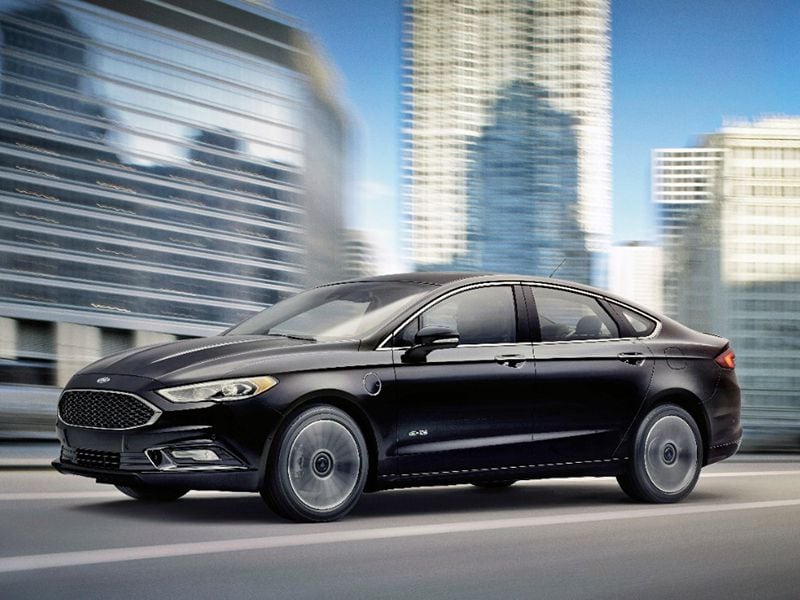
2017 Ford Fusion Energi Profile ・ Photo by Ford
Gas prices might be down, but efficient cars remain hugely important to automakers. In this roundup of 10 cars that get better than 40 mpg, pure electric vehicles don’t qualify, although we did include electric vehicles with gas engines that provide EPA ratings for when the gasoline engine is running. Similarly, plug-in hybrids qualified according to their gas-only ratings, although we also considered MPG-equivalents. And finally, we used the EPA combined mpg ratings to rank these cars, although we know the combined rating doesn't always give the whole story of a car’s efficiency. With that in mind, we present 10 new cars that get better than 40 mpg (and some that get better than 50):
2016 Toyota Prius Two Eco—56 mpg combined.
The Toyota Prius Two Eco is really just a trim level of the 2016 Prius family, but it posts the highest EPA numbers in the Prius lineup and deserves a close look. At 58 mpg city/53 mpg highway/56 mpg combined, the Prius Two Eco gets much better fuel economy than a base Prius. That’s also much higher than the previous generation of the Prius, and every Prius to date. One could reasonably expect the 2016 Toyota Prius Two Eco to be a harsh penalty box on wheels, based on those numbers, but it’s not.
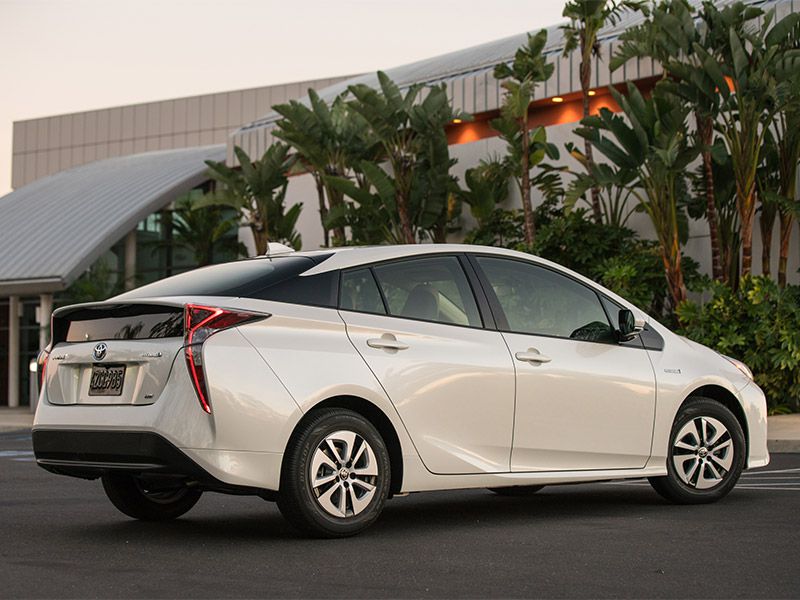
Photo by Toyota
2016 Toyota Prius—52 mpg combined.
As the Toyota Prius matures, it gets nicer as well as more efficient. The redesigned 2016 Prius comes in several trim levels with different equipment packages and interior finishes. Apart from the incredibly fuel-efficient Two Eco model already mentioned, all other trim levels of this Prius share drivetrains and the same excellent EPA fuel economy ratings of 54 mpg city/50 mpg highway/52 mpg combined. Driving a Prius will never impress anyone who prefers fast acceleration. That's fine, but Toyota has made some considerable improvements this year. Its handling is more composed, the ride is smoother, and the interior feels more upscale, with spacious front and back seating areas. The Prius is no luxury car, but it's one of the most well-rounded hybrids available.
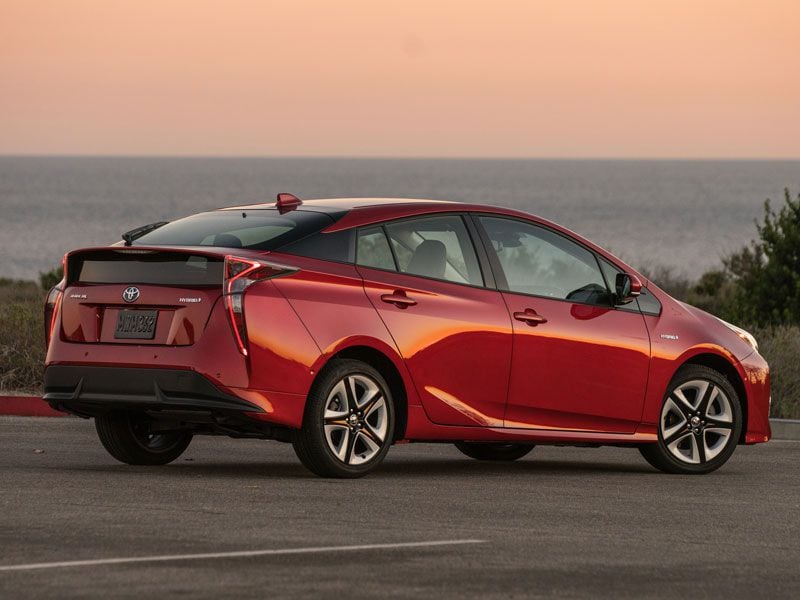
Photo by Toyota
2016 Toyota Prius c—50 mpg combined.
You might think the subcompact 2016 Toyota Prius c, smaller than the regular Prius and with a less powerful engine, would get better fuel economy. That’s not the case, although the Prius c does come close, easily earning returning 50 mpg in EPA combined fuel economy. The Prious c also costs about $5000 less than its sibling, a shrewd move on Toyota’s part to get younger buyers and urban dwellers converted to the Prius way of life. Unfortunately, the Prius c is much less refined than the Prius; it’s not as well insulated from road noise or unpleasant surfaces, and the interior isn’t as nice. The important thing to remember, though, is that the Prius c delivers on its promised fuel economy.
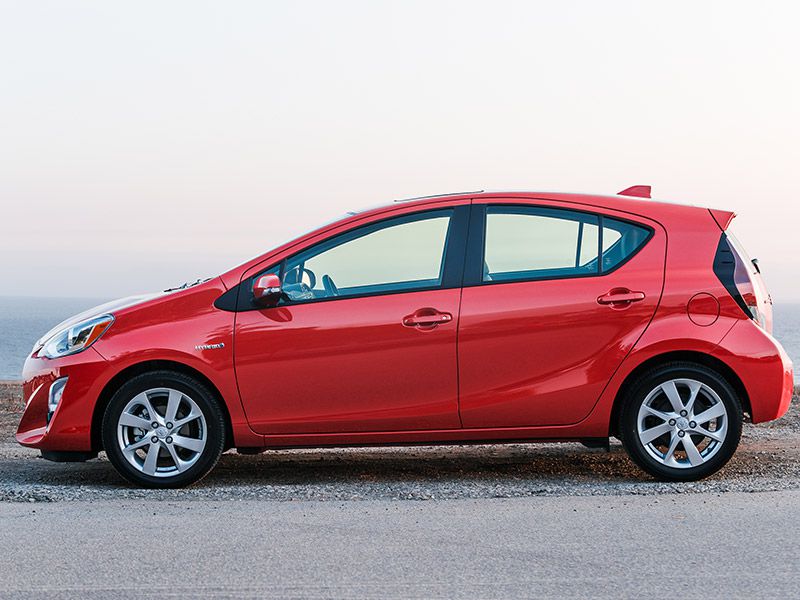
Photo by Toyota
2017 Honda Accord Hybrid—48 MPG combined.
The 2015 Honda Accord Hybrid went away with little fanfare, skipped a model year, and quietly returned for 2017. Even with the tougher new EPA tests, Honda managed to squeeze one extra mile per gallon out of this year’s Accord Hybrid, which is rated by the EPA at 49 mpg city/47 mpg highway/48 mpg combined. While 1 extra mpg might not sound like much, every little bit counts in cars fighting for 50 mpg. For this year, Honda also included the HondaSensing suite of advanced safety technology as standard equipment. The 2015 Accord Hybrid was noted for its comfortable ride and dialed-in handling, and the suspension and steering feel even better for 2017. Buyers shopping for a spacious and comfortable sedan with close to 50 mpg should consider the revised Honda Accord Hybrid.
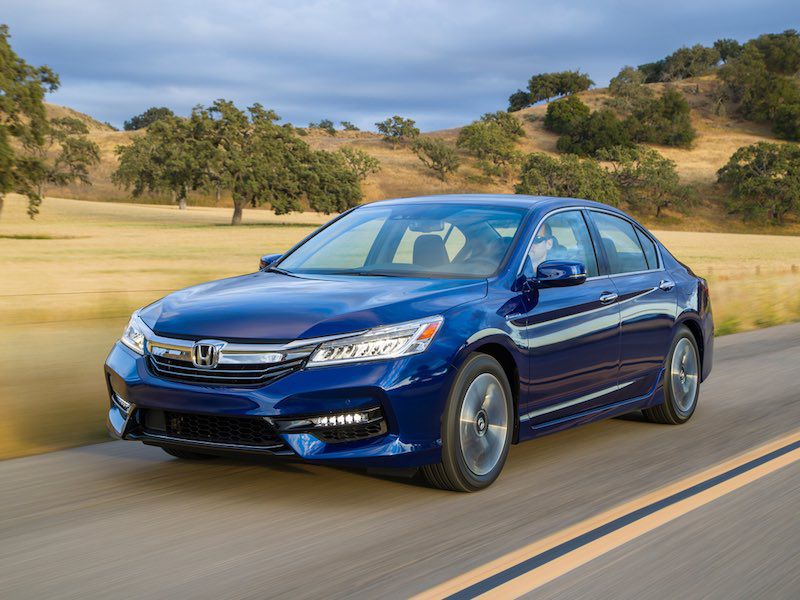
Photo by Honda
2016 Chevrolet Malibu Hybrid—46 mpg combined.
The fully redesigned Chevrolet Malibu Hybrid might not be able to keep up with the class-leading Toyota and Honda options, but it comes really close, landing on the top half of our list of 10 cars that get better than 40 mpg. The Malibu is a midsize sedan that comfortably seats five, making it a smart option for families who need something a bit bigger than a Prius. Like other cars of its size that prioritize efficiency over power, the Malibu Hybrid isn’t quick, but its drivetrain performs smoothly with steady acceleration, and its handling is strong and predictable. On the downside, it’s easy to see where Chevy’s designers cut costs with the Malibu Hybrid’s cabin design and finishes.
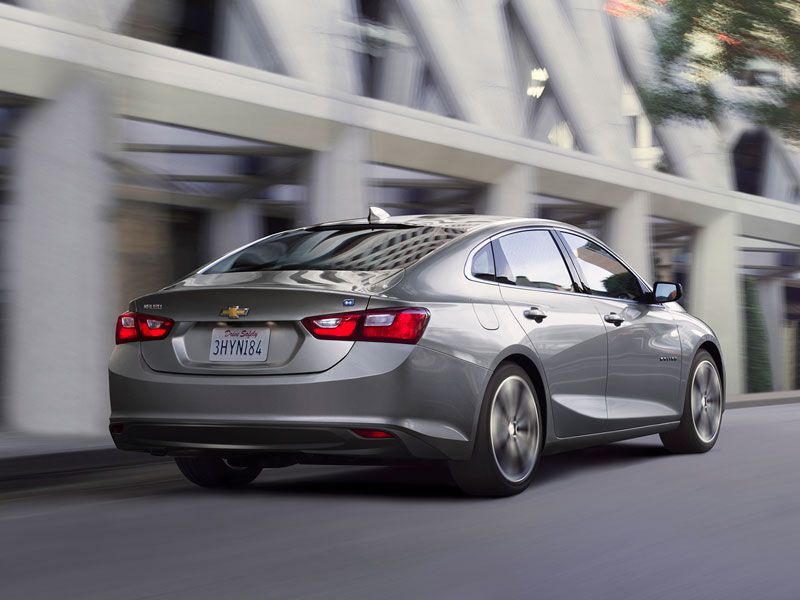
Photo by General Motors
2015 Honda Civic Hybrid—45 mpg combined.
Like the Honda Accord Hybrid, the Civic Hybrid also went away for 2016. Unlike the Accord, the Civic Hybrid doesn’t appear to be coming back. As of this writing, however, the 2015 Civic Hybrid remains for sale on Honda’s website and we would be remiss in our duties if we omitted this workhorse from our list of 10 cars that get better than 40 mpg. You may be aware that the regular Civic just got a full redesign for 2016; that means the 2015 Civic Hybrid is a generation behind. That’s fine, because it’s still a very solid car that seats five passengers more cozily than the Accord, providing affordable, reliable, safe, and efficient transportation.

Photo by Honda
2016 Chevrolet Volt—42 mpg combined.
Here’s where our list of the 10 cars that get better than 40 mpg gets interesting. From here on, we’re looking at plug-in hybrids, which can’t touch the top traditional hybrids in gas-only mode, but make up for it in all-electric mode (measured in MPG-equivalent). The Chevrolet Volt, redesigned for 2016, is the top performer in this category, earning 106 MPGe when its 42-mpg gas engine isn’t needed for backup. The updated Volt is a little less futuristic-looking than its predecessor, and it’s also a lot more user-friendly, with considerable improvements in range and a redesigned drivetrain that frees up one more seating position, increasing passenger capacity to five.
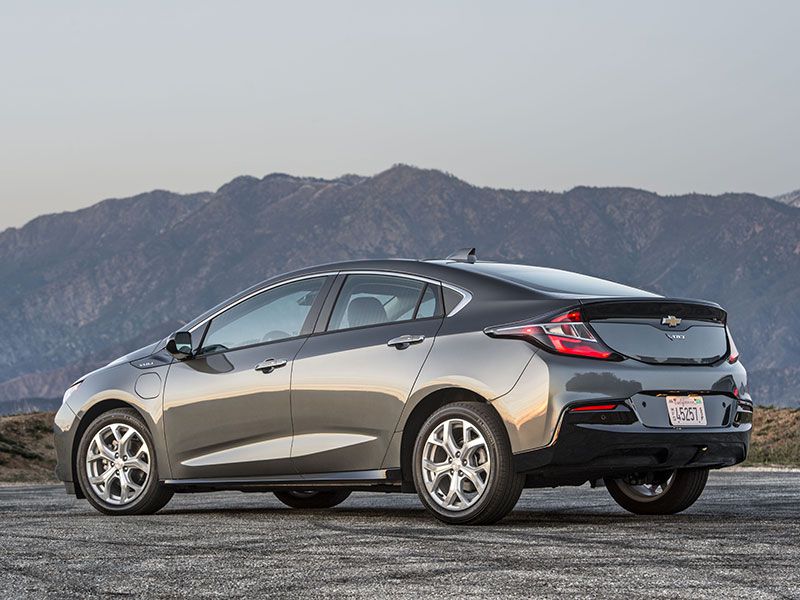
Photo by General Motors
2017 Ford Fusion Energi Plug-In Hybrid—42 mpg combined.
The 2017 Ford Fusion Energi Plug-In Hybrid is a smart choice for a fuel-conscious driver who wants a comfortable sedan—that is, if the hefty price premium can be overlooked. The Fusion Energi Plug-In Hybrid costs considerably more than the regular gas Fusion and the Fusion Hybrid, and it’s up to consumers to decide if the fuel benefits and the warm fuzzy feelings are worth it. When the Fusion Energi Plug-In doesn’t need its gas engine, its electric motor setup earns fuel economy of 97 MPGe, which is about average for a plug-in hybrid of its size. The 2016 Ford Fusion Energi Plug-In has good handling and boasts an upscale cabin, too.
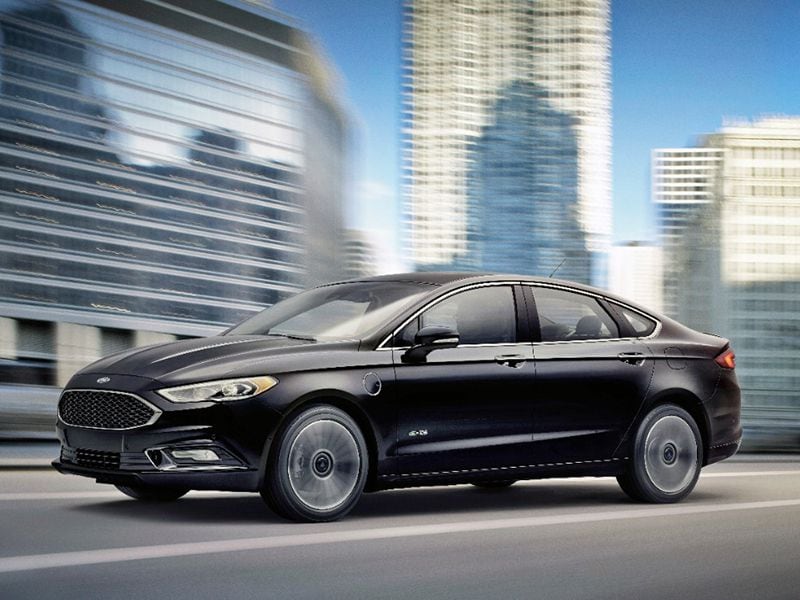
Photo by Ford
2016 Hyundai Sonata Plug-In Hybrid—40 mpg combined.
The redesigned 2016 Hyundai Sonata Plug-In Hybrid falls just short of the mileage returned by the Ford Fusion Energy Plug-In Hybrid’s gas engine, but it beats out its electric efficiency with 99 MPGe. Of course, the goal of a plug-in hybrid is to maximize electric usage and tap into the gas reserves as infrequently as possible, so in real-world usage, the Sonata gets the win here. The Sonata Plug-In Hybrid is based on the regular Sonata midsize sedan, and offers seating for five passengers in a roomy and comfortable cabin. As is typical with Hyundai, plenty of high-end standard equipment is included, and the brand’s class-leading warranty is also a point in its favor.
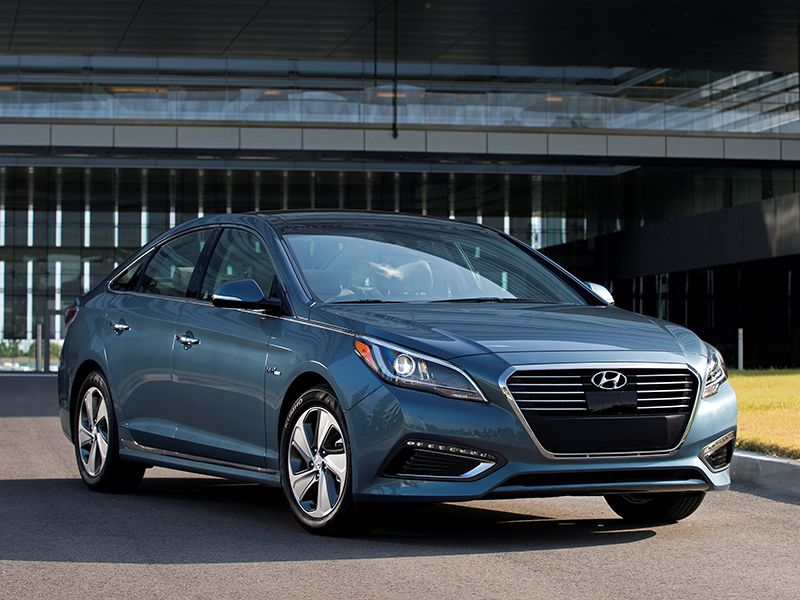
Photo by Hyundai
2016 BMW i3 with Range Extender—39 mpg combined.
The 2016 BMW i3 is an interesting case. It’s a compact luxury car that was designed to be fully electric. However, we’re singling out the Range Extender model, which features a tiny gas engine that acts as a generator to recharge the battery on-the-go. While that’s going on, the i3 essentially acts as a plug-in hybrid for a short time—hence the 39 mpg figure, which, admittedly, is not quite up to our desired EPA combined figure of 40 mpg. In fully electric mode, the i3 earns 117 MPGe, the best figure cited throughout our list of 10 cars that get better than 40 mpg. The BMW i3 with Range Extender, at $46,250, is rather expensive for a 4-passenger car, but it comes with the luxurious accoutrements one would expect from BMW.
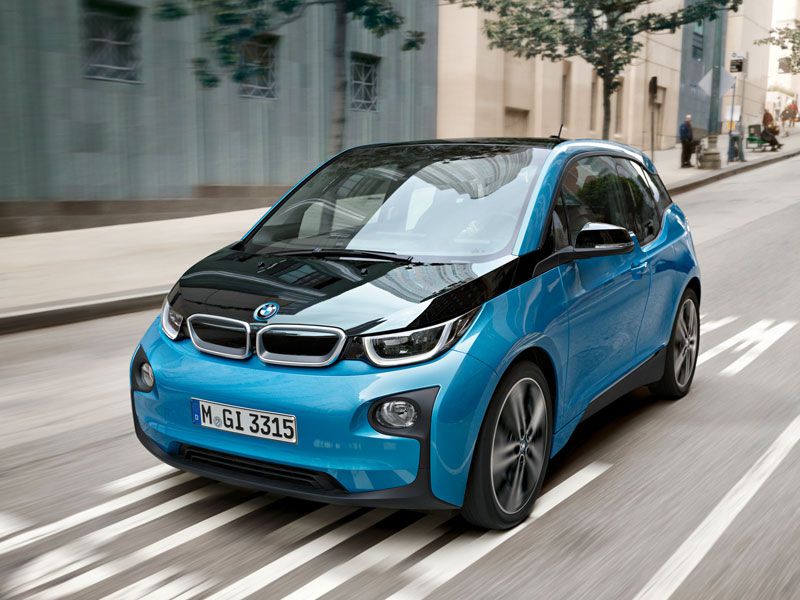
Photo by BMW